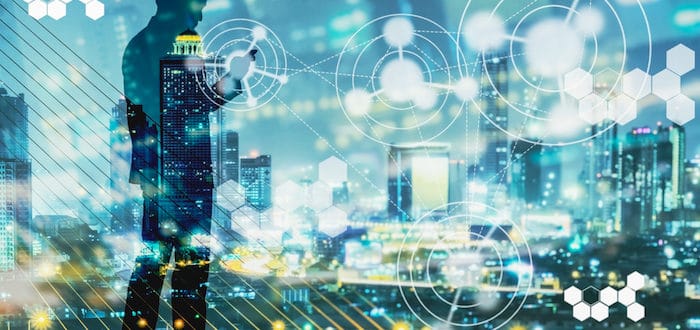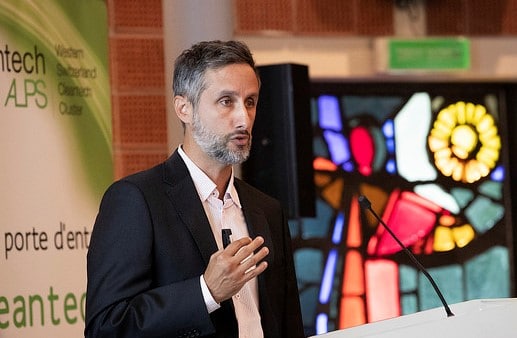Smart metering, consequences and opportunities

Author
Grégoire Largey
About
Smart Metering
Context
It can be noted that Switzerland is not ahead of its neighbours. Quickly and efficiently deploying smart meters is challenging on different levels. At the social level, some countries find accepting the smart meters difficult. The controversy around Linky meters in France is a good example of this. Some associations raise questions at the technical, health or financial level. In Switzerland, this problem should be less present. Article 17a of the LApel allows the Federal Council to issue regulations concerning the introduction of intelligent measurement systems installed on the end-user’s premises.
With conventional meters, the technological challenge was essentially the area of metrology. With the arrival of smart meters, new technological solutions must be found for data collection and transfer, as well as, data storage and recovery.
The following paragraphs describe these four areas.
Metering
The area of metering does not represent our core business, however, through our projects and our experiences, we have made the following observations:
- The historical players in the field of metering are struggling to abandon a “proprietary” approach to meters and data. Conventional meters are relatively expensive at the moment and have only a few default interfaces. Each additional interface must be specifically developed, therefore, at an added cost. In the era of open source and widespread digitalization, conventional meters seem not very flexible.
- New players are appearing on the market, offering more open solutions. They also offer configurable software layers, especially at the level of communication protocols. This aspect allows for greater interoperability (element required by OApEl art 8a 2a)
- The field of metering is very regulated and controlled. It is not possible to buy “exotic” meters and install them without having them approved. In Switzerland, the Federal Institute of Metrology (METAS) designates the relevant technical standards and normative documents for the management of measuring instruments. In turn, this validates the certification and calibration of meters. These aspects appear in two ordinances: OIMes 941.210 and OIMepe 941.251.
Data collection and transmission
Originally, before the advent of smart meters, only one piece of data needed to be collected manually each year. An on-site visit was required to read the meter values.
However, the new law in Switzerland now requires that readings be made quarterly. Over one year, this represents 35,000 data inputs. it’s really all about automating the data collection process now.
But this is not as simple as one might think at first glance. It is a question of optimally importing the data from the measurement point to the network operator, while knowing that several types of smart meters, all of different generations, will have to coexist on one network.
It also remains to be seen if each smart meter will have to directly transfer the information to a centralized server, or if this task will be assigned to a data gateway. This second possibility has the advantage of offering open interfaces with which to connect to the largest number of smart meters. All while offering a configurable software layer to pull up the information on a central server in a specific way.
The key to collecting this data is finding the most versatile solution that can be adapted to the existing or non-existing communication infrastructure for each site.
The “SmartEnergy @ ICT Handbook” published by the Swiss Telecommunications Association (ASUT) on 10 June 2016 describes the architecture principles to be respected.
Network operators are not the only one concerned by this problem. In the context of energy community, the community manager is in charge of supplying the group members and takes responsibility for metering and collecting the consumption / production data of each member.
Data storage
As mentioned previously, the volume of stored information will increase significantly for each client. The law requires storing information every 15 minutes for a minimum of 60 days. In fact, for data recovery and valuation purposes, gathered information will be kept longer. A quick estimate determines that a network operator with 100,000 customers will need to store approximately 150-200 gigabytes of data per year.
The amount of data to be stored, while significant, is not enormous. One of the challenges for storage is actually accessing stored information quickly. As such, conventional databases are not necessarily the most adequate. A time series database is more suitable for handling large volumes of data gathered from thousands of devices. The storage solution also needs to be carefully considered so that it can be easily integrated into new Big Data IT architectures.
Another important element is data security. In the digital era, the risks of data piracy are increasing, as illustrated by the recent attack on Swisscom[1]. The data hosting solution must be developed while taking these risks into account (encryption, anonymity, secure access …).
There’s also the problem of data protection and privacy. In Europe, consumers’ personal data is protected by EU rules on data processing and the free movement of such data. This regulation establishes rules about who can access personal data and under what circumstances. The European Commission has also published several provisions relating to the issue of smart metering.[2] In Switzerland, work on data protection and data security related to smart grids has also been initiated. The SFOE has published a study aimed at identifying the need to protect and secure information and communication technologies [3]. With the new European Data Protection Regulation (GDPR) entering into force on 25 May 2018, some of this generated data will be subject to the maintenance of a data processing register, which is one of the most important obligations imposed by the GDPR.
[1] Know more
[2] Know more
[3] Schutz- und Sicherheitsanalyse im Rahmen der Entwicklung von Smart Grids in der Schweiz, OFEN Juillet 2016
Valuation and access to data
The valuation covers the processing part of the measured data and the visualization.
The solution must be able to process data quickly in order to easily view the data in real time and generate the right reports. All the data collected will be valued differently according to the users.
For both the network operator and the energy supplier, more data will help to better understand their customers and improve the quality of services offered: billing, energy consulting, pattern study, intraday vision of energy flows, consumption prediction, customer segmentation … For their part, the end customer can monitor consumption in real time.
Above all, the approach to the data valuation should be primarily centred on business. The objective is to improve business intelligence by integrating this new information with other existing data in the company, whether internal or external (production, price, weather …).
From an IT standpoint, the solution must integrate with the company’s Big Data strategy. This approach makes it possible to process large amounts of data and analyse them very quickly thanks to specific techniques: searches for correlations, forward-looking analyses, modelling, simulations, data visualizations …
In addition, the developed solution will also have to offer standardized interfaces so to allow stakeholders to access collected data. Art 8a al.3 of the LApel defines the measures and information to be made available.
Conclusion
It can be seen that the roll-out of smart meters represents a challenge on several levels. In Switzerland, in light of the high fragmentation of network operators, the question arises whether each actor must develop the end-to-end solution alone or whether a pooled approach would not be more efficient.
About the author

An EPF electrical engineer with an MBA, Grégoire Largey is responsible for business innovation at the eEnergy Center, the innovation partner at the service of energy experts. The eEnergy Center offers innovation projects and consulting to accelerate the transition of the energy sector through digitization.


